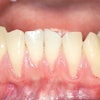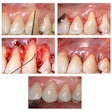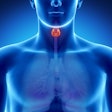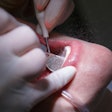
Acknowledging that "increasing momentum" could make it difficult to defeat legislation supporting unsupervised midlevel providers, the Washington State Dental Association (WSDA) is throwing its weight behind an alternative proposal: the advanced function dental auxiliary (AFDA).
Last month, on a 58-20-1 vote, the WSDA House of Delegates passed HD-13-2012, the "Alternative to dental midlevel providers" resolution. Among other things, the resolution allows the association to introduce legislation to create a new AFDA program and prevent individuals with limited training to perform irreversible procedures without the direct supervision of a dentist.
"Organized dentistry must regain control of a political issue that has dominated the attention of legislators and nondental advocacy groups in Olympia [the state capitol]," Danny Warner, DDS, president of the WSDA, wrote in a September 18 letter to the association's members. "Leadership in the House and Senate has demanded that dentistry come forward with a proposal or else they will pass their own legislation. By submitting a proposal, WSDA will ensure adequate supervision and safeguards to protect the public and the profession."
In 2011, the WSDA worked with state legislators to defeat HB 1310, a bill supporting the creation of the dental therapist model. Earlier this year, the WSDA again worked with legislators to defeat two similar pieces of legislation: HB 2226 and SB 6126, both considered modified versions of HB 1310, according to the WSDA.
Broad-based support
Even so, the issue is far from over, the association acknowledges.
"We've been dealing with this for the last three years, and we could not see a scenario where the issue would go away," said Rod Wentworth, DDS, immediate past president of the WSDA, in an interview with DrBicuspid.com. "The support in favor had become so great that we were kind of an island alone in opposition to it. We felt the time was right to develop an alternative model that met our core principles."
“The support in favor [of MLPs] had become so great that we were kind of an island alone in opposition to it.”
president, Washington State Dental
Association
Support for dental midlevel provider legislation continues to grow and includes the support of influential legislators, national organizations (such as AARP), hygienists, and outside advocacy groups, according to the WSDA.
For example, in Washington the W.K. Kellogg Foundation has contracted with the Children's Alliance and Washington Community Action Network, two state-based advocacy groups, to promote dental therapists as a solution to dental access, the WSDA noted. In addition, Washington is one of five states involved in a $16 million effort funded by the Kellogg Foundation to support the creation of dental therapist programs in these states.
"After two consecutive years with dental therapist legislation and growing support among legislators and advocacy groups, the odds of having some sort of dental midlevel provider established in Washington state have moved from possible to almost inevitable," HD-13-2012 states.
Supporters of the midlevel provider model are planning to introduce new legislation in 2013, according to the WSDA. But the association is likely to press forward with its own legislative efforts, Dr. Wentworth noted.
"There was a lot of pressure among a number of legislators that we should come with a bill this year, and we are in the process of putting together some meetings with key legislators," he said.
Dentist supervision critical
With that in mind, HD-13-2012 authorizes the WSDA to introduce legislation for the AFDA model, which has some distinct differences from the midlevel provider models proposed in previous legislation. In particular, the AFDA would be limited to working only in federally qualified health centers (FQHCs) and would require either close or general supervision by a licensed dentist, depending on the type of procedure.
While the dentist "is the sole oral health professional authorized to diagnose and prescribe treatment for patients," the WSDA proposal would allow midlevel providers to perform a number of procedures (again, under supervision by the dentist), including the following:
- Preliminary charting of the oral cavity
- Making radiographs
- Mechanical polishing of restorations
- Applying topical preventive or prophylactic agents
- Placing temporary crowns
- Temporary recementing of crowns
- Removing sutures
- Scaling
- Gross debridement
- Administering local anesthesia and nitrous oxide
- Cavity preparation
- Direct restorations of primary and permanent teeth
- Preparing and placing preformed crowns
- Pulpotomies on primary teeth
- Extracting primary teeth with class III mobility
- Permanent recementing of permanent crowns
- Final impressions
The WSDA resolution also addresses the issue of education requirements. Before entering training to become a dental midlevel provider, an individual must demonstrate the following:
- Successful completion of an extended function dental assistant program approved by the Dental Quality Assurance Commission (DQAC), or a dental hygiene program approved by the secretary of health with minimum work experience as required by the DQAC rule
- Successful completion of a dental midlevel provider program approved by DQAC with a minimum length of two years
- Successful completion of a preceptorship under the close supervision and control of a dentist approved by DQAC
- Successful completion of clinical and written examinations approved by DQAC that are equivalent to the testing for dentists
The WSDA also advocates a review process for any model that is approved legislatively and implemented in the FQHCs dental clinics.
"If the proposal goes through, it would be up for review by the DQAC in 2022 to see if it is working, not working, where it might be improved, etc., and they would make a recommendation to modify, remove, or keep that protocol in place," Dr. Wentworth said.
A subsequent review by the DQAC in 2026 would involve a larger assessment of how the new model is working and how it is impacting the delivery of care and other team members, he added.
The association is urging all member to participate in Dental Action Day on January 25, 2013, at the state capitol to discuss these and other critical issues related to improving access to care and improving the dental safety net in Washington state, such as loan repayment programs, the expansion of dental residencies, dental emergency referral programs, and improving oral health literacy and prevention programs.



















